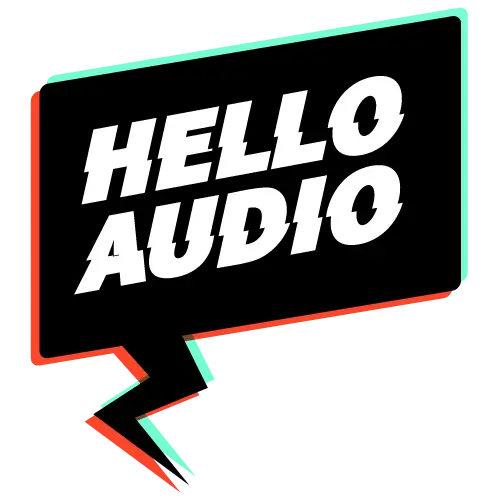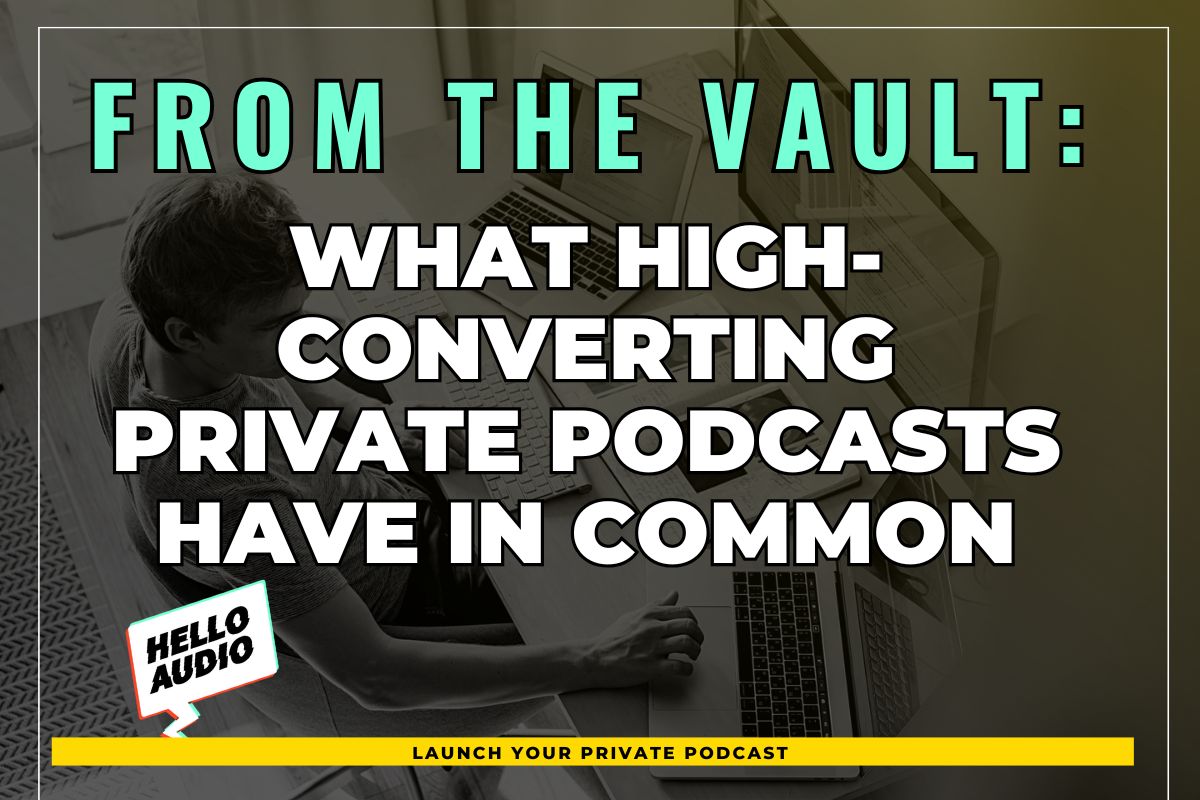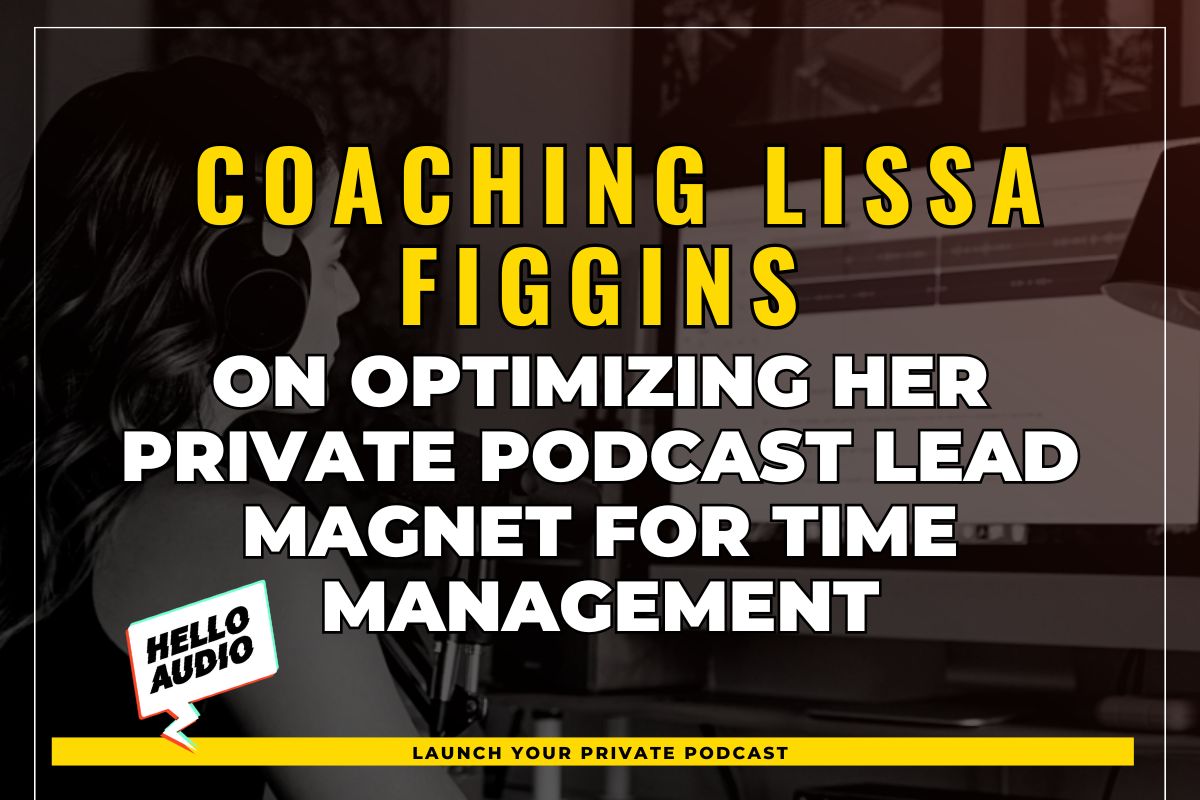If your goal is to build a sustainable income from your creations, you’ve likely wondered which platform fits best: Patreon or Substack. Both allow direct monetization, but Patreon is membership- and multi-format focused, while Substack is all about newsletters and writing.
In this guide, we’ll explain how each platform works, highlight their key features, and help you decide which fits your goals.

TL;DR – Patreon vs. Substack
Before we dive into the nitty-gritty, here’s a quick snapshot of Patreon and Substack:
| - Steady, recurring income through memberships - Supports multiple content formats (video, audio, art, text) - Tiered memberships allow flexible fan support - Strong community engagement tools | - Simple, easy-to-use platform for writers - Direct newsletter-to-inbox delivery - Free and paid subscription options - Built-in discoverability and SEO benefits |
| - Not ideal for creators without an existing fanbase - Takes 8–12% of earnings plus payment fees - Platform rules apply; limited full control - Tax implications depend on your location | - Limited to mostly text-based content (podcasts/video possible but secondary) - Fewer community engagement tools - Revenue cut: 10% + Stripe fees (~2.9% + $0.30 per transaction) - Minimal customization for branding |
This gives you a solid overview, but don’t stop here. In the sections that follow, we’ll break down each platform in detail so you can see exactly how they work and which one fits your creative goals best.
What Is Patreon?
Patreon is a subscription-based platform that lets content creators earn a steady income directly from their fans. Launched in 2013 by Jack Conte and Sam Yam, it was built to help creators, whether musicians, artists, podcasters, or writers, monetize their work without relying on ad revenue or one-time crowdfunding campaigns.
Creators use Patreon to offer patrons exclusive perks like early content, behind-the-scenes looks, and special updates, in exchange for regular, ongoing payments.
Today, over 8 million creators use Patreon to connect with millions of patrons, using its tools to build sustainable income through direct fan support.

How Does Patreon Work?
Patreon connects creators with fans through a simple model: creators offer content, services, or products, and patrons subscribe with recurring payments. Creators set up membership tiers, each with its own rewards ranging from a $1 shout-out to exclusive behind-the-scenes access for higher-paying patrons.
The more valuable and personalized the rewards, the better the chances of growing a loyal supporter base.
Creators manage their page, post exclusive content, and engage with patrons through built-in tools for messaging, posting updates, and even live streaming. Patrons access content directly on the creator’s page or through their Patreon feed.
Patreon is built around managing recurring payments. It takes a small cut of monthly earnings, depending on your plan, but keeps things simple and predictable. The platform prioritizes long-term relationships over one-off projects, enabling creators to transform fan support into a steady income.

Patreon Features
Let’s break down what makes Patreon tick and why so many creators swear by it:
- Membership Tiers: You can set up different levels of support. Maybe a $1 tier gets a simple shout-out, while $20 gets early access to new projects or exclusive behind-the-scenes content. It gives your fans options, and you can offer rewards that make sense.
- Direct Support: The beauty of Patreon is simple: fans pay you directly, month after month. No ads. No middlemen. Just a steady income from people who actually want to support your work.
- Communication Tools: Creators can engage directly with patrons through messaging, posts, live chats, and private communities. These tools help maintain close relationships, deliver rewards, and share updates.
- Content Distribution: Want to share text, images, videos, audio, or livestreams? Go for it. You decide who sees what. Maybe some content is open to all patrons, and other stuff is locked behind higher tiers. Video uploads work either directly on Patreon or through embeds from YouTube or Vimeo.
- Performance Metrics: Patreon offers analytics on patron growth, earnings, engagement, and content performance. Real-time data enables creators to track trends and adjust their strategies for improved results.
- Integration: Patreon integrates well with platforms like YouTube, WordPress, and Discord, making it easier to manage content distribution and audience access in one place.
- Creative Freedom and Stability: With direct fan support, creators have more freedom over their work and financial backing that’s less volatile than ad revenue models. This helps fund projects, upgrade equipment, and sustain long-term creative efforts.

Is Patreon Free?
Signing up on Patreon is totally free. Whether you’re a creator or a fan, there are no upfront costs to create an account, explore other creators, or browse projects.
Here’s a quick breakdown:
- Patreon cut: 10% of earnings once you start making money.
- Payment processing fees: ~2.9%–3.9%, depending on location.
- Currency conversion fee: ~3%+ if patrons pay in a different currency.
- Payout fee: A small fee when transferring to the bank or PayPal.
- Essentially: Free to start, but Patreon takes a cut for its services.
Pros and Cons of Patreon
Let’s break down why Patreon could work for you and where it might not:
Pros
- Reliable Income Stream: If you set up your tiers right and build a decent following, Patreon can turn into a solid, recurring income. For some creators, it becomes their primary source of revenue.
- Closer Connection with Fans: Patreon makes it easy to offer exclusive content and private spaces where your most loyal supporters can engage with you directly. It creates a community rather than just a one-way content dump.
- Built-in Accountability: When people pay for your work, you have a clear responsibility to deliver. That keeps you on track and motivates you to maintain quality and consistency.
- Transparent Growth: You can see how your subscriber count stacks up and track what works. It’s a reality check that helps you understand your audience and push your creative game further.
- Creative Freedom: Unlike any ad-driven platforms that control your reach and content, Patreon puts you in charge of what you create and offer. It’s your vision, your rules (mostly).
Cons
- Not Great for New Creators: Without an existing fanbase, getting started is hard. You can’t pull in many patrons out of nowhere. Patreon works best when people already care about your work.
- Patreon Takes a Cut: Depending on your plan, Patreon takes 8% to 12% of your earnings, plus payment processing fees and currency conversion charges. That adds up.
- Platform Rules Apply: If Patreon changes its fees or policies, there’s not much you can do except adapt. You don’t get complete control, especially if your content doesn’t align perfectly with their guidelines.

Is Patreon Safe?
Patreon takes safety seriously. Your personal and payment info is encrypted, and the platform meets industry standards like PCI compliance. They also offer two-factor authentication and have a Trust & Safety team monitoring for abuse or fraud.
Here’s what you should keep in mind for added security:
- Avoid using public Wi-Fi without a VPN.
- Enable two-factor authentication for extra security.
- Use HTTPS encryption to protect your data in transit.
- Stay alert for scams and phishing attempts.
- Enable content moderation, which runs 24/7 to catch inappropriate content.
Patreon is fairly safe compared to competitors, but your security depends on good habits. Use strong passwords, enable 2FA, and be cautious of suspicious messages.

What Is Substack and How Does It Work?
Substack is a platform where writers, journalists, and creators publish newsletters and get paid for them. Launched in 2017, it was built to help creators break free from traditional media gatekeepers and build direct relationships with their audience.
Today, thousands of creators use it to share essays, industry insights, opinion pieces, podcasts, and even videos.
Here’s how it works:
- Creators publish content directly to their audience via email or the Substack website/app.
- They can offer free and paid subscription tiers.
- Paid subscribers get exclusive content delivered straight to their inbox.
- Subscribers can comment and react, sparking conversations.
Substack acts like a hybrid of a blog, newsletter, and social platform. It’s more than just sending emails; it’s built for engagement. Readers can support creators directly by subscribing, and creators get tools to manage their audience, track performance, and monetize their content.
Substack is about cutting out the middleman and letting writers connect directly with readers while earning income through subscriptions.
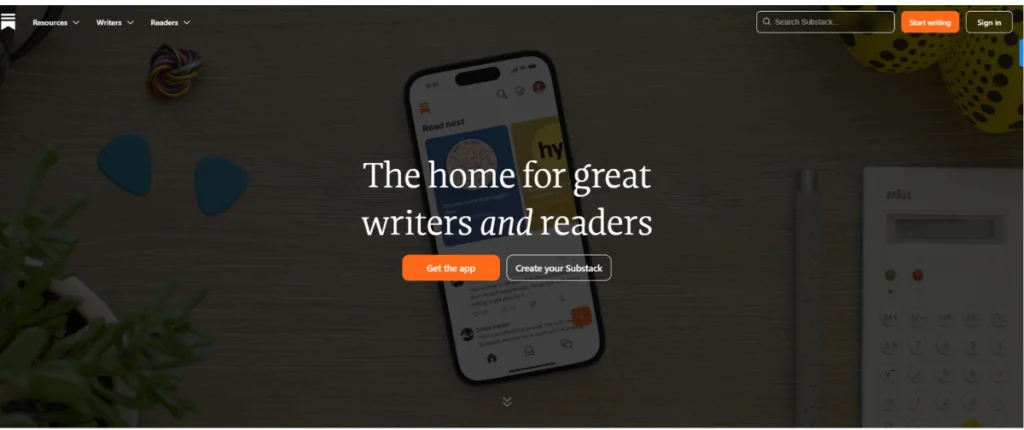
Substack Features
Here’s what makes Substack stand out:
- Newsletter Publishing: Create and send text-based newsletters directly to your audience’s inbox.
- Multiple Content Formats: Beyond text, you can publish podcasts, videos, and even hold group chats, giving your audience more ways to engage with your work.
- Subscription Tiers: Offer free and paid subscription options. Free content gets people in the door, and paid content keeps them coming back.
- Direct Audience Connection: Subscribers can reply to your emails, leave comments, and engage in discussions. It’s not just broadcasting, it’s building a community.
- Built-in Analytics: See who’s reading, which posts perform best, and how your subscriber base grows over time. It helps you adjust your strategy on the fly.
- Simple Monetization: Substack handles payment processing and subscription management, taking a 10% fee. You focus on writing; they handle the logistics.
- Substack App and Web Access: Your subscribers can read your posts in their email, on Substack’s website, or via the mobile app, making it easy to stay connected.

Is Substack Free?
Getting started on Substack costs nothing. Writers can create newsletters, build an audience, and publish content without any upfront fees.
Platform and payment processing fees only apply once you start earning.
Substack Pricing
When you start charging for subscriptions on Substack, here’s how the pricing and fees break down:
- Subscription rates are set by writers.
- Plans can be both monthly and yearly.
- Substack takes 10% of paid subscriptions as fees.
- Stripe takes approximately 2.9% plus 30 cents (varies for international/non-credit card payments) per transaction as processing fees.

Pros and Cons of Substack
It’s important to weigh the good against the not-so-good. Let’s break it down:
Pros
- Direct Monetization: Your readers pay you straight – no ads, no middlemen, no guessing how many clicks you need to make money.
- Easy to Use: Write, publish, and send. That’s it. You don’t need to fuss with complicated tools or setups.
- Build a Community: People can comment, reply, and engage with your posts. It’s not just a newsletter, it’s a space where your readers can connect with you.
- Content Ownership: Everything you create is yours, including your subscriber list. That’s not something you get on every platform.
- Flexible Subscriptions: Want to give some content away for free to hook new readers? Go for it. Want to lock your best stuff behind a paid tier? You can do that too.
Cons
- Limited Customization: Don’t expect to create a flashy, custom newsletter. Substack keeps it simple, which is great for focus but limiting if you love branding.
- Platform Dependence: Substack takes a 10% cut, and you rely on Stripe for payment processing.
- Discovery Challenges: Unlike social media platforms, Substack doesn’t have a built-in audience. You need to drive your own traffic.
- Customer Support Limitations: Some users report slow responses when issues arise.

Is Substack Safe?
Substack uses standard security measures, like encryption, to protect your data, and payments go through Stripe, which is widely trusted.
Still, here’s what you should keep in mind:
- Be cautious of suspicious emails or links pretending to be from Substack.
- Use unique passwords and enable two-factor authentication if possible.
- If you’re logging in from coffee shops or airports, consider a VPN to keep your info safe.
What About Hello Audio?
Now, while Patreon and Substack are great for building audiences and earning directly from fans or subscribers, some creators want to take their content one step further, making it accessible on the go. That’s where Hello Audio comes in.
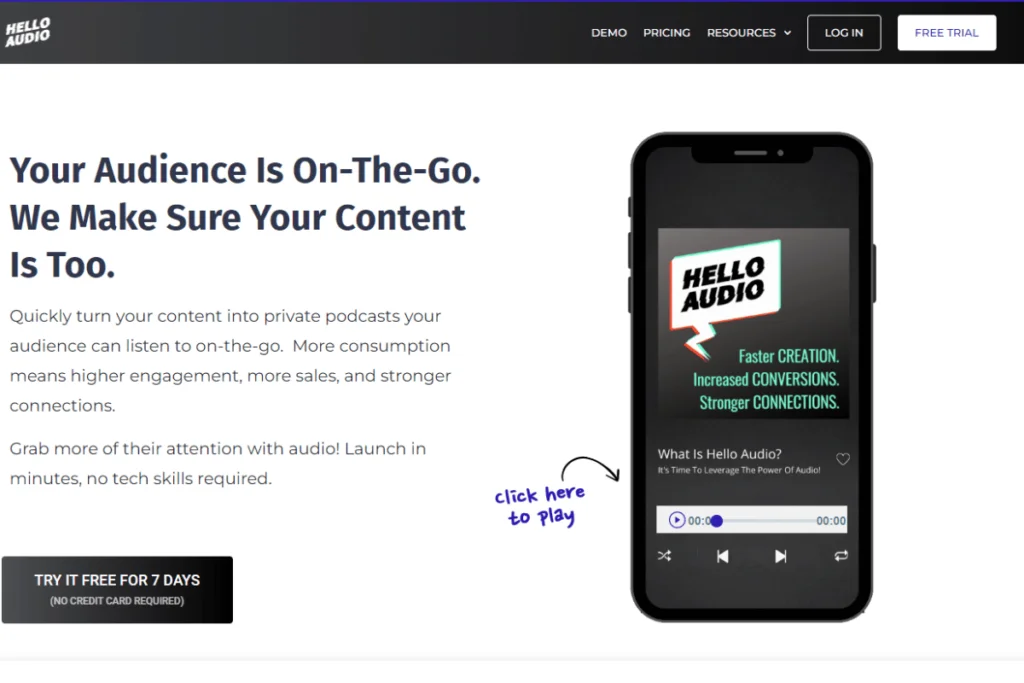
It is a private podcasting platform designed to help creators transform their content, be it courses, coaching sessions, webinars, or newsletters, into audio feeds that audiences can listen to on the go. This is particularly valuable for course creators, membership site owners, and coaches who want to boost engagement by making their content easier to access.
Here’s what makes it handy for creators:
- Private Audio Feeds: Deliver content directly to your audience through their favorite podcast apps.
- Drip Content Delivery: Schedule episodes over time so your audience consumes content in a structured way.
- Automatic Video-to-Audio Conversion: Easily turn existing video content like webinars, tutorials, or courses into audio for listeners who prefer podcasts.
- Listener Management: Gain detailed insights into who’s listening, how they engage with your content, and track trends, helping you improve offerings and better serve your audience.
Hello Audio makes your content easily accessible for people on the go. It works seamlessly alongside Patreon or Substack, letting you transform video content, newsletters, or membership content into private audio feeds for your audience.

Detailed Comparison Between Substack and Patreon
So you’ve seen what Patreon and Substack offer, and we even touched on Hello Audio as a bonus tool. Each platform serves a slightly different purpose, and depending on your goals, one might be a better fit than the others.
To make it easier, we’ve broken down the key features side by side so you can see how they stack up at a glance:
- Starter-$14/month - Pro-$39/month - Powerhouse-$81/month |
|||
Similarities and Differences
Patreon and Substack give creators tools to make money from their audience, but the methods differ.
Let’s take a look at where their features overlap and where they set themselves apart.
Substack and Patreon Similarities
Even though they serve different types of creators, Patreon and Substack share some common ground:
- Direct Monetization: Both let creators earn directly from their audience without relying on ads.
- Subscription Model: Recurring payments are at the heart of both platforms, creating predictable income.
- Audience Engagement: You can build an online community, whether through patron-only posts on Patreon or subscriber comments on Substack.
- Control Over Content: Creators own what they publish and decide how and when to share it.
Essentially, both platforms put the creator in charge of their work and revenue, giving more independence than traditional publishing or social media.

Substack and Patreon Differences
Here’s where the two diverge:
- Content Type: Substack is primarily for written newsletters (though it supports podcasts and videos), while Patreon handles a wide variety of content like video, audio, art, and more.
- Community Tools: Patreon has built-in messaging, live streams, and tiered memberships. Substack is more like a publishing + email platform, with comment threads but fewer community features.
- Monetization Style: Patreon is tier-based, where you can reward different levels of support. Substack usually offers free vs. paid subscriptions.
- Customization: Patreon pages are more flexible for branding and content display. Substack keeps things minimal, focusing on readability over design.
- Learning Curve: Substack is straightforward for writers. Patreon takes a bit more planning, especially if you’re managing tiers and content schedules.
Knowing these differences makes it easier to pick the right platform.

The Bottom Line – Substack vs. Patreon
So, which is better? Substack and Patreon both let you earn from your audience, yet they cater to different creator types.
- Substack is perfect if you’re a writer, journalist, or anyone who wants to build a newsletter-focused audience.
- Patreon shines for creators with varied content, such as podcasts, videos, art, or music, who want to offer tiered memberships and build a closer, more interactive community.
If your goal is to monetize newsletters and grow subscribers, Substack is a solid choice. For those who want multiple content types, flexibility, and closer fan engagement, Patreon offers more options. Plus, platforms like Hello Audio can enhance either, transforming your content into audio so your audience can listen on the move.
Ultimately, it’s all about your content, your audience, and how you want to interact with them. Choose the platform that fits your workflow, not just the one everyone else is on, and you’ll build growth that lasts.

Frequently Asked Questions (FAQs)
Here are answers to some additional questions:
Which Platform Offers Better SEO Benefits?
Substack has a slight edge here. Search engines index newsletters and posts, so your content can show up in Google searches.
Patreon is less SEO-friendly since much of the content lives behind paywalls.
Do Patreon and Substack Allow Third-Party Integrations?
Yes, but differently. Patreon integrates with tools like Discord, WordPress, YouTube, and Zapier, helping you manage content and community.
Substack has limited integrations, primarily focusing on email, analytics, and social sharing.
How Is Email Marketing Managed on Patreon vs. Substack?
Substack is built around email, so newsletters go directly to subscribers’ inboxes, and you can segment free vs. paid readers.
Patreon sends updates via notifications and emails, but email marketing features are limited; you’ll often need third-party tools for advanced campaigns.
Which Platform Offers Better Discoverability for Creators?
Substack gives creators better organic discoverability because your posts are public by default and searchable online.
Patreon relies more on your existing fanbase; discoverability outside your audience is limited.

